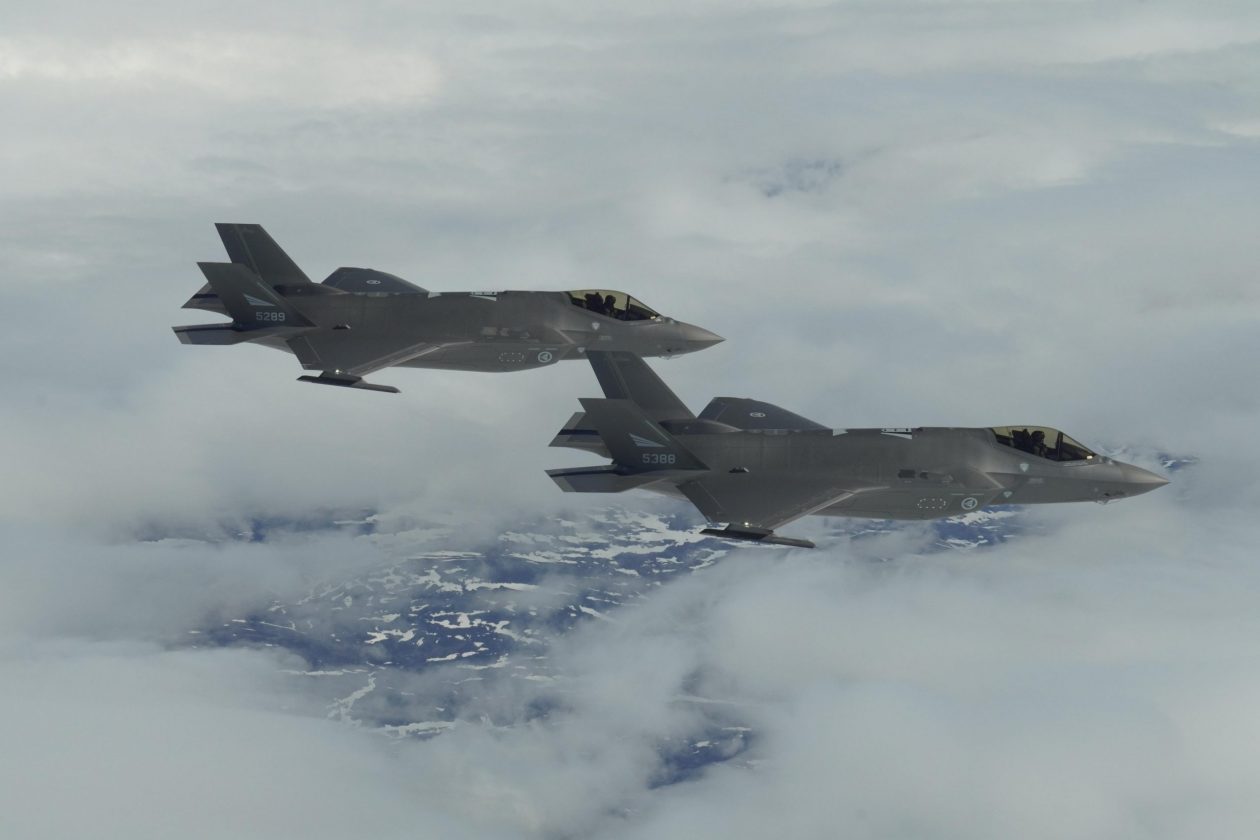According to recent media reports, Canada would pay much less than Germany to purchase the F-35A Lightning II fifth-generation stealth aircraft from the US.
Debates have erupted in Canada on whether the country is getting a good deal for the F-35 after reports of massive startup costs associated with buying and deploying a new fighter jet.
The Canadian government is yet to make a formal announcement, but The Canadian Press reported on December 20, citing two anonymous defense sources, that the Department of National Defense has received authorization to spend $7 billion on an initial set of 16 F−35s and associated gear.
That would amount to around $450 million for each F-35, which is equivalent to five times the publicly reported cost of the aircraft, which is $98.22 million per plane, including ancillary expenses like depot maintenance, ground support equipment, and spare parts, according to the US Department of Defense Fiscal Year (FY) 2022 Budget Estimates, published last year.

However, the cost put out by the Canadian government also includes the much−needed upgrades to the Royal Canadian Air Force’s (RCAF) physical and digital infrastructure, such as new facilities to house and maintain the fighter jets and upgrades to the military’s computer networks.
According to experts, upgrades to the RCAF’s infrastructure and network are essential, considering the present condition of the service’s facilities and the advanced technology of the F-35, compared to the CF−18s that it will replace.
The experts say these upgrades would almost certainly account for most of the $7 billion.
“What’s occurred here is they front−loaded every single cost that wasn’t related to the acquisition of the aircraft,” said F−35 expert Richard Shimooka of the Macdonald−Laurier Institute. “Hangars, labs, and support equipment. They’ll probably buy all the terminals and support equipment right off the bat,” he said.
The Canadian government intends to acquire 88 new fighter jets to replace the RCAF’s aging fleet of CF-18 Hornet, a variant of the American McDonnell Douglas F/A-18 Hornet. The new fighters will be purchased in batches.
Previously, the government had fixed the cost of buying the fleet at $19 billion. However, the Canadian Defense Minister, Anita Anand, said earlier this year that figure was being “refined,” and it has not been clear what that figure does — and does not — include.
The Canadian Defense Department published a report in August 2013, laying out the costs expected to replace the RCAF’s CF−18s with F−35s, which included simulators, ground support equipment, repair facilities, a reprogramming lab and upgrades to various bases and airfields across the country.
Carleton University defense procurement expert Philippe Lagasse, who previously served on an independent panel assigned to carry out assessments of military procurements, explained that the $7 billion includes more than 16 F−35s.
“So you can’t divide 16 by $7 billion,” Lagassé said. “We already know that involves infrastructure, upgrades, and weapons systems. So there’s a lot of bundling. And until we get the details, nobody can comment on what this involves in terms of per−unit cost.”
According to the former Commander of the Royal Canadian Air Force, Lieutenant−General (Retd.) André Deschamps, the government has to spend money to upgrade the country’s fighter jet bases in Cold Lake, Alta., and Bagotville, Que., no matter what aircraft it bought.
“These are 1950s hangars that we built in Cold Lake and Bagotville,” said Deschamps, who now works for Ottawa−based CFN Consultants, a lobbying firm whose customers include Lockheed Martin.
“So there’s a major investment required no matter what fleet we buy,” Deschamps continued.
And considering the advanced nature of the F-35, Deschamps said the upgrades would not only involve improving the physical facilities in Cold Lake, Bagotville, and other places where they will be deployed but also include upgrades to the military’s information systems.
“There’s a lot of costs in physical and digital infrastructure. So that’s billions of dollars to do all the bases, forward−operating locations, deployed operating locations. Anywhere these fighters go, you’ll have to have an improved footprint so they can operate from those locations,” Deschamps said.
Germany To Pay More For F-35 Than Canada
The debate surrounding the costs of the Canadian plan is centered around an announcement by Germany in the previous week that Germany has signed an $8.4−billion contract to purchase 35 F−35s and associated weapons, spare parts, and support services, which comes down to around $325 million per plane.
This is around $125 million less than the Canadian government plans to spend on each plane.
“The reported cost of this purchase, for only 16 jets, is outrageous. Earlier this year, the government intended to purchase 88 fighter jets for $18 billion. Today’s news suggests the government is not interested in getting the best value and is leaving Canadians on the hook to pay for their bad decisions,” NDP defense critic Lindsay Mathyssen said in a statement on Wednesday.
However, experts say that Canada being a partner in the multinational Joint Strike Fighter (JSF) development program, will ultimately pay much less per plane than Germany, as it has been footing the bill for the F-35’s development costs since 1997.
Whereas Germany is not a partner country and is purchasing the plane from the US through a different mechanism, “So Germany’s not a great comparison,” said Macdonald−Laurier Institute’s expert Shimooka.
Shimooka believes that being a partner country, Canada will pay the same amount per plane as the US, which keeps on varying from year to year as Washington negotiates future production schedules with Lockheed Martin, the manufacturer of F-35.
As stated before, the estimated cost for FY22 is around $98.22 million per plane, according to the US Department of Defense Fiscal Year (FY) 2022 Budget Estimates, published last year.
- Contact the author at tanmaykadam700@gmail.com
- Follow EurAsian Times on Google News